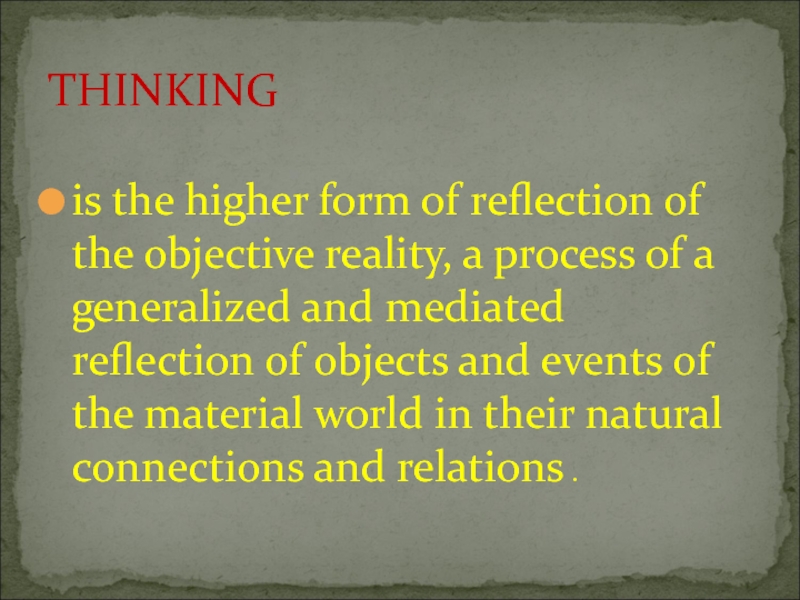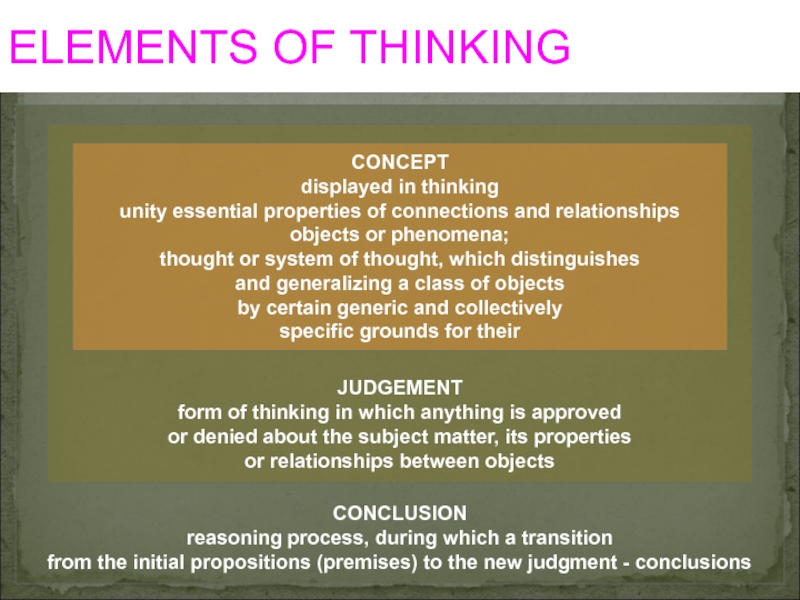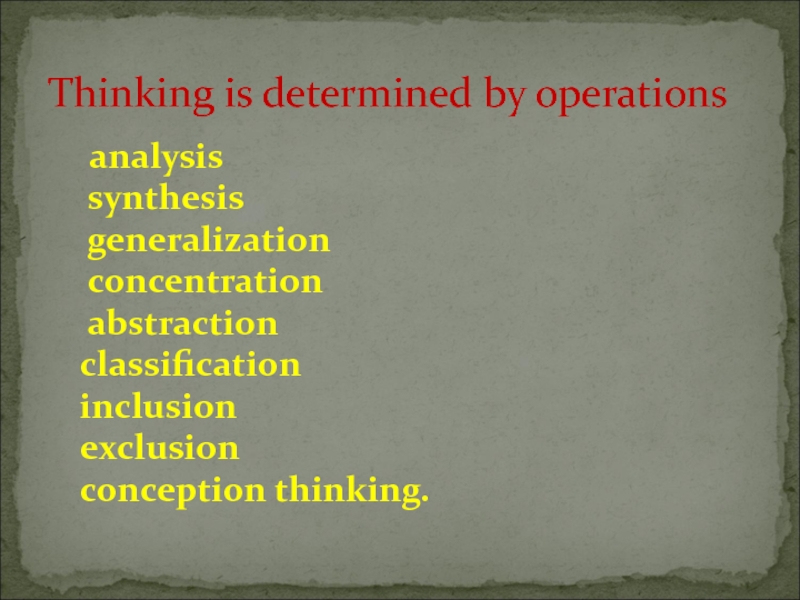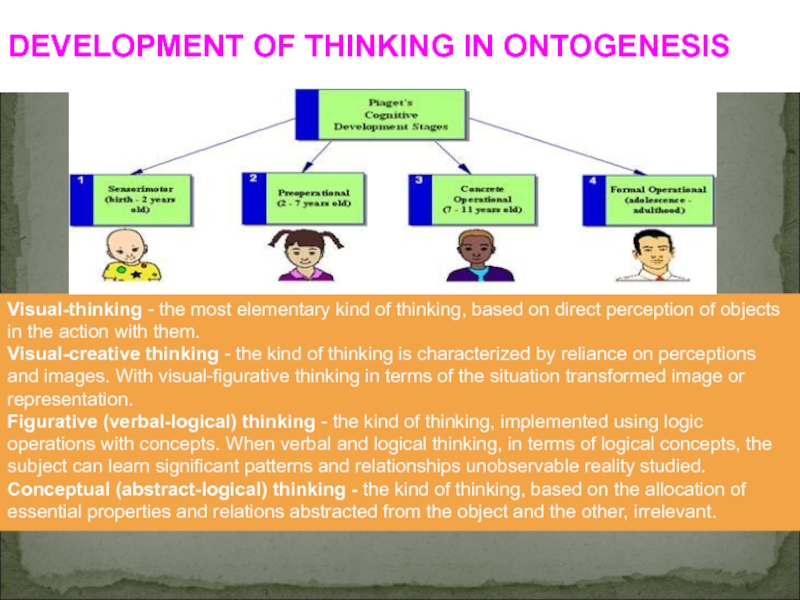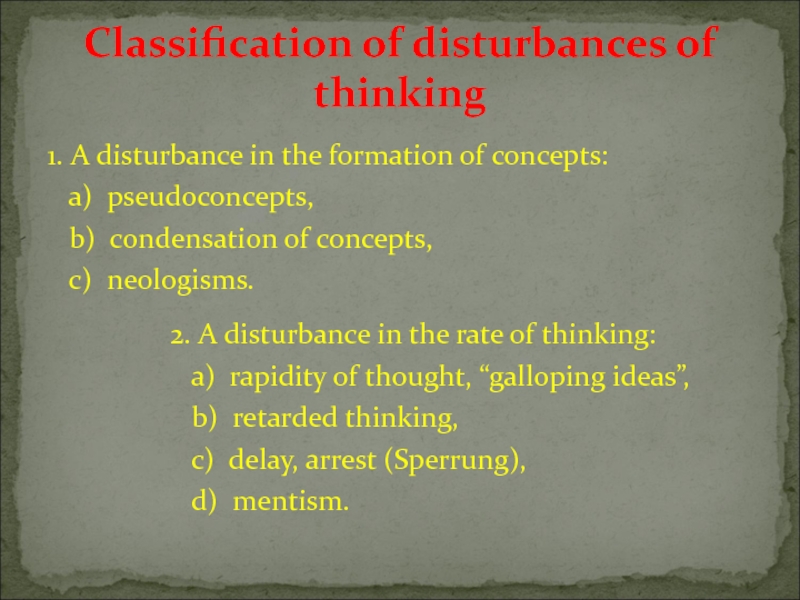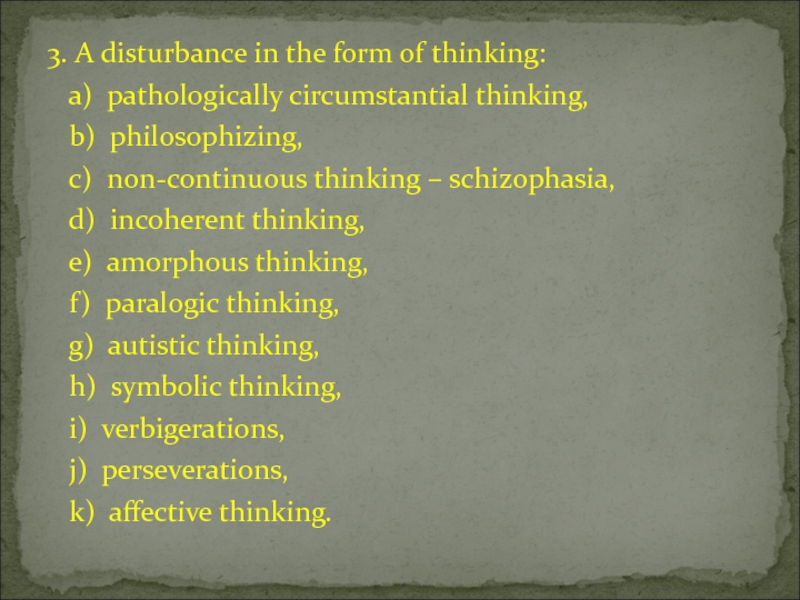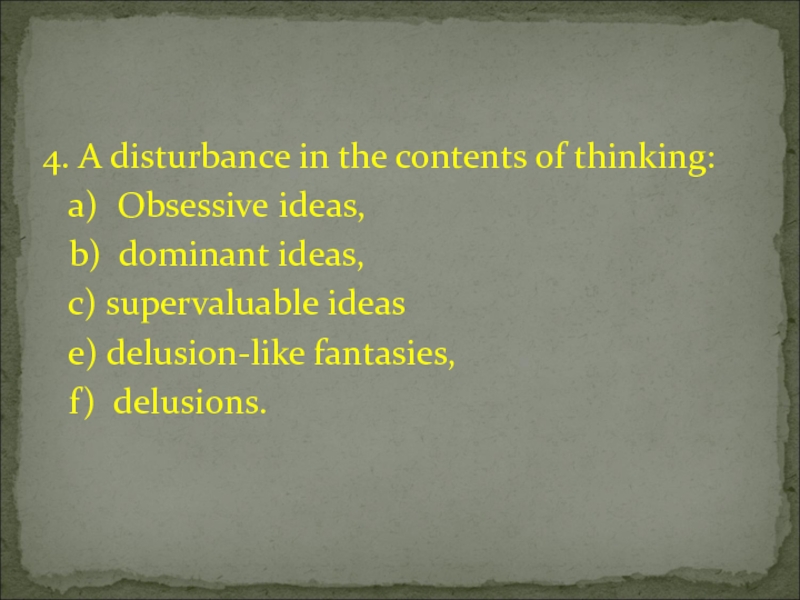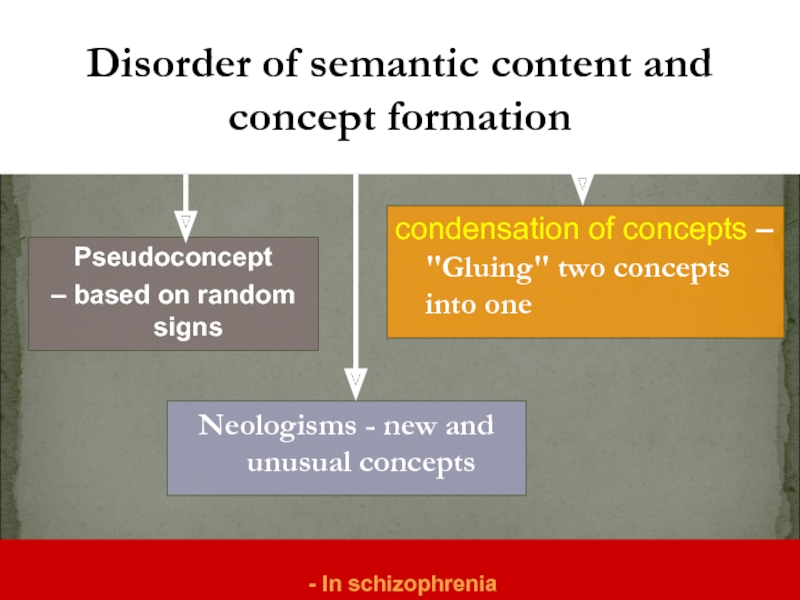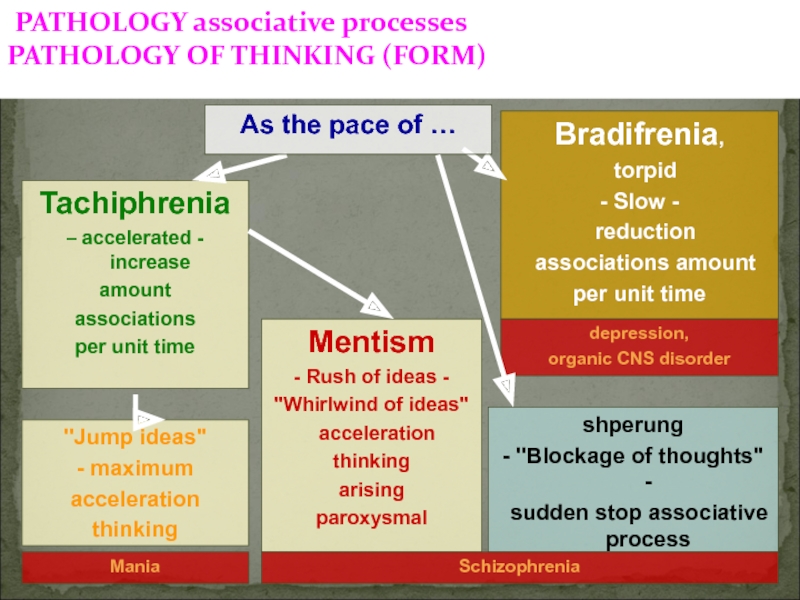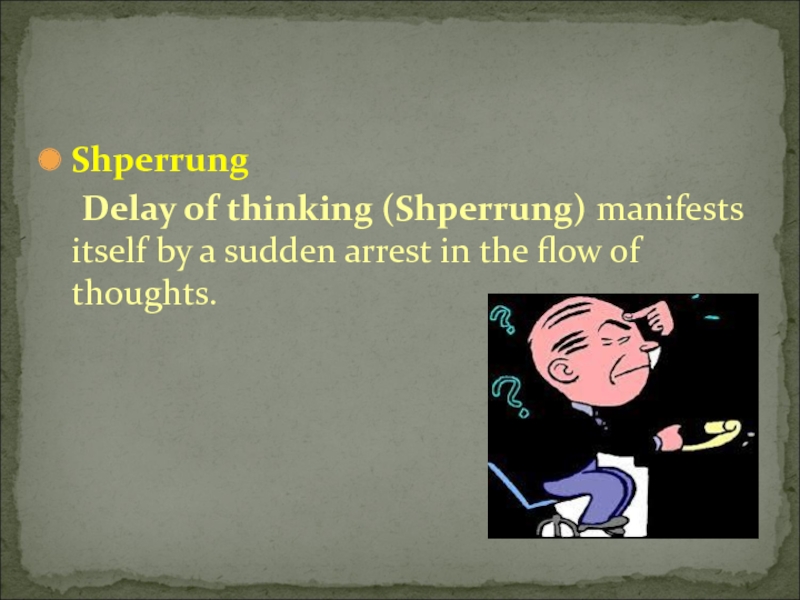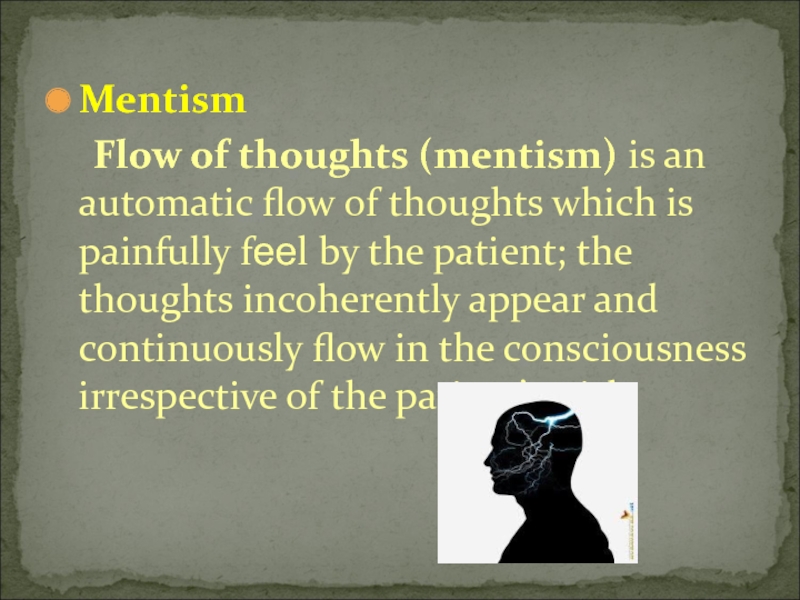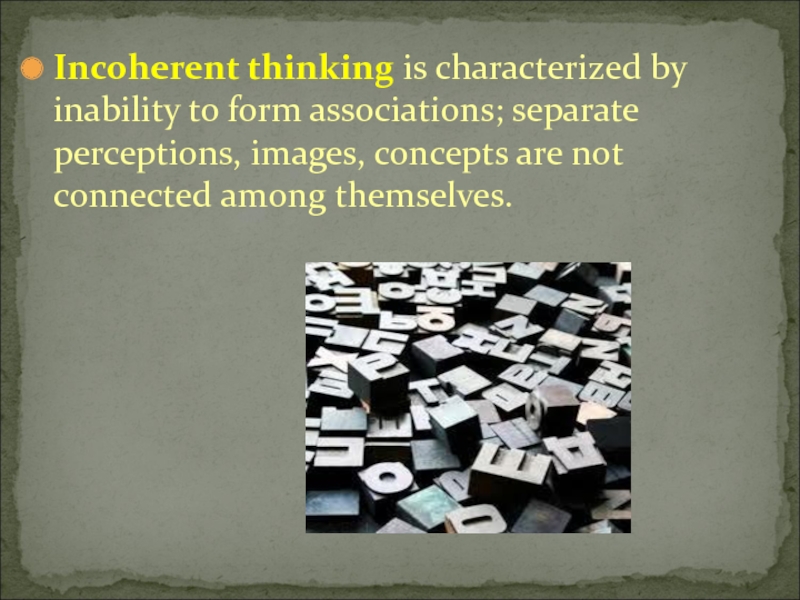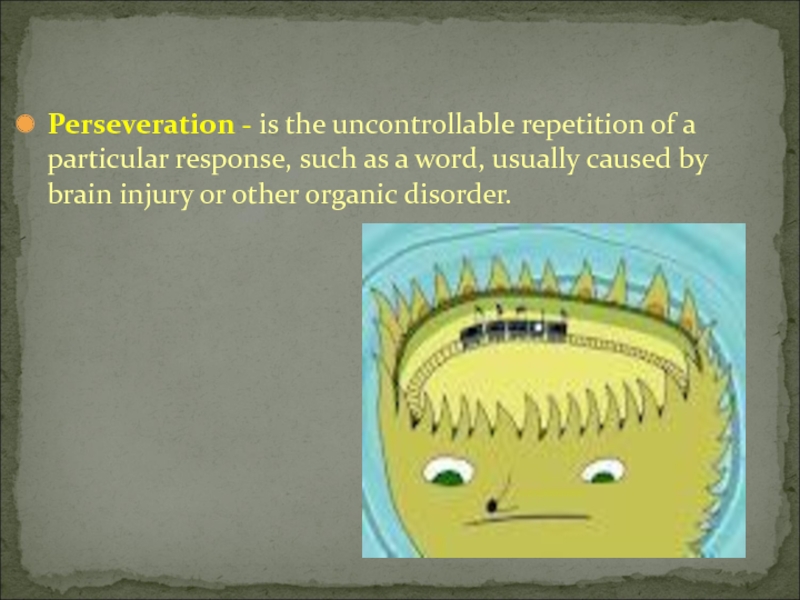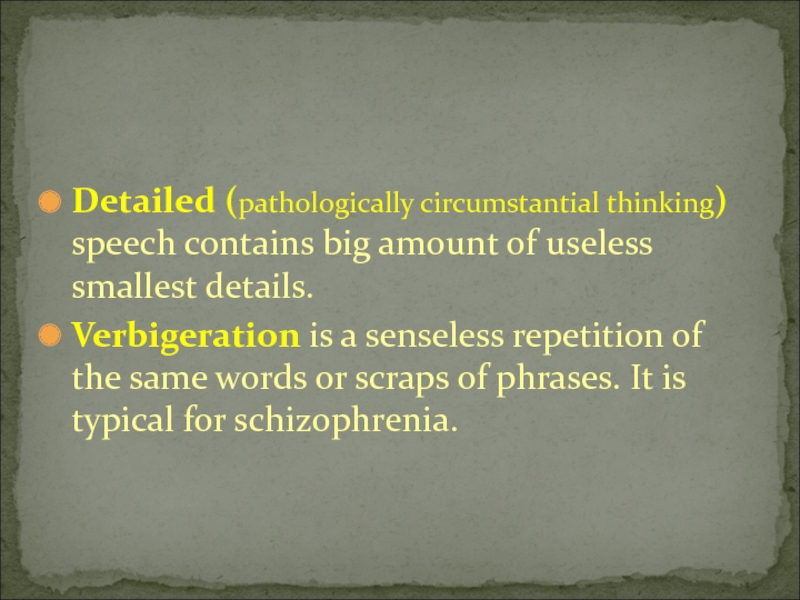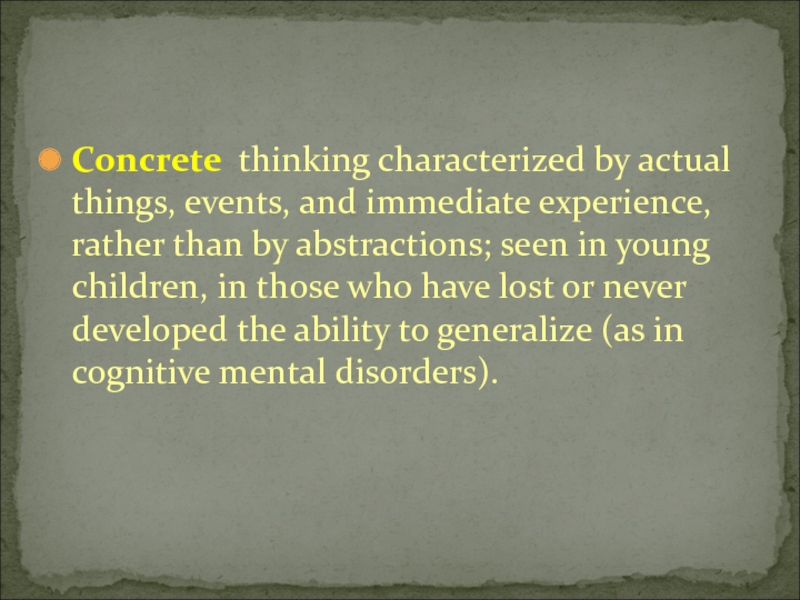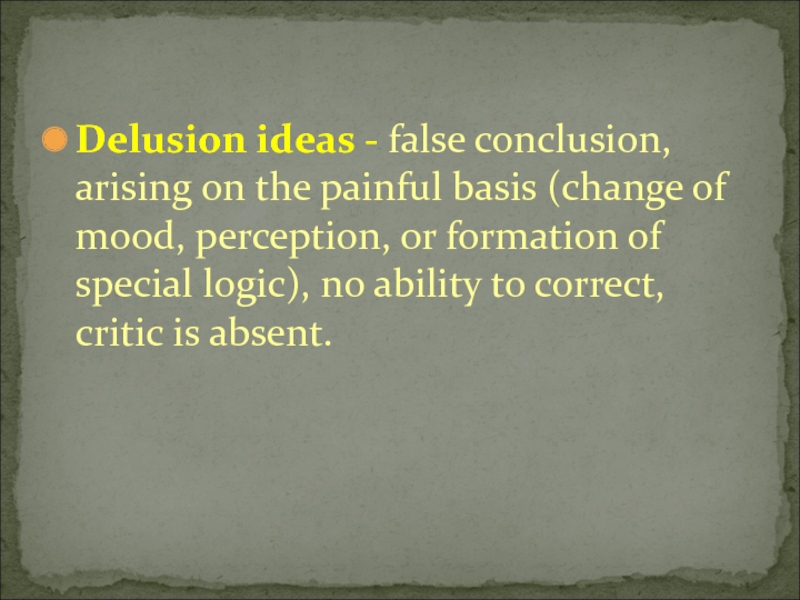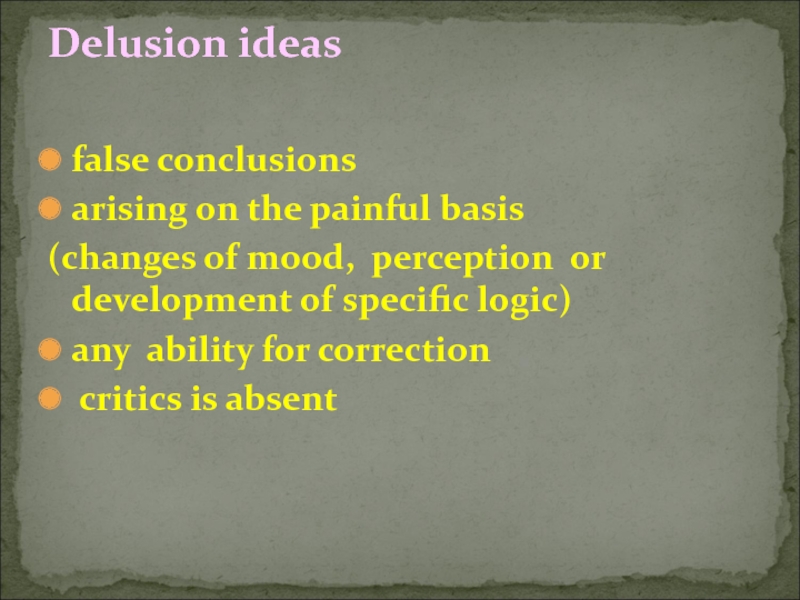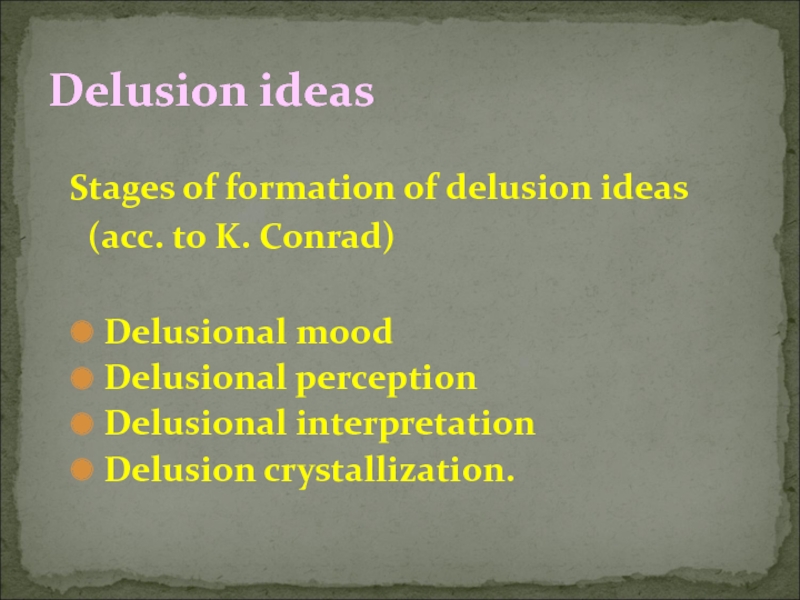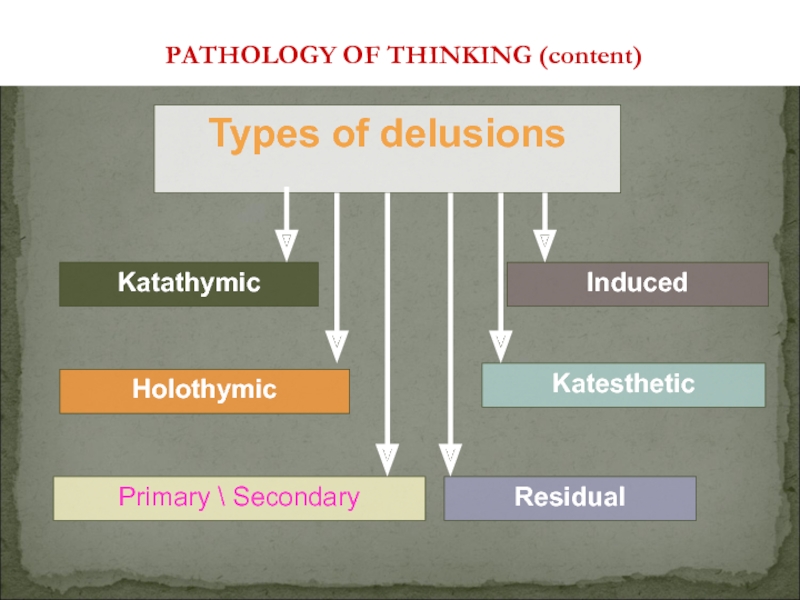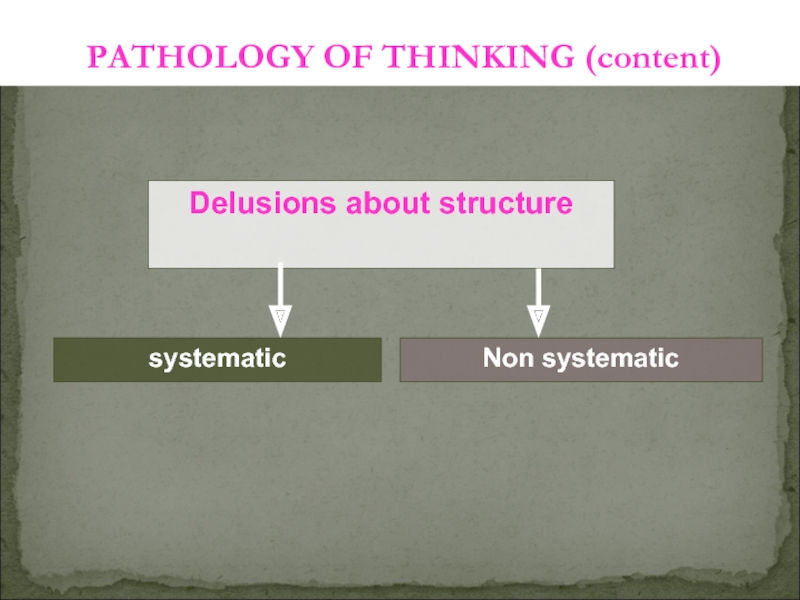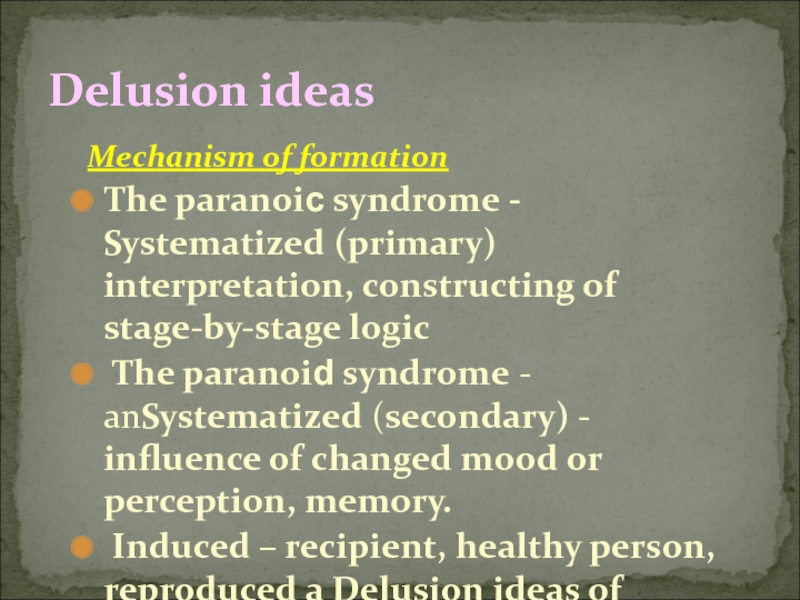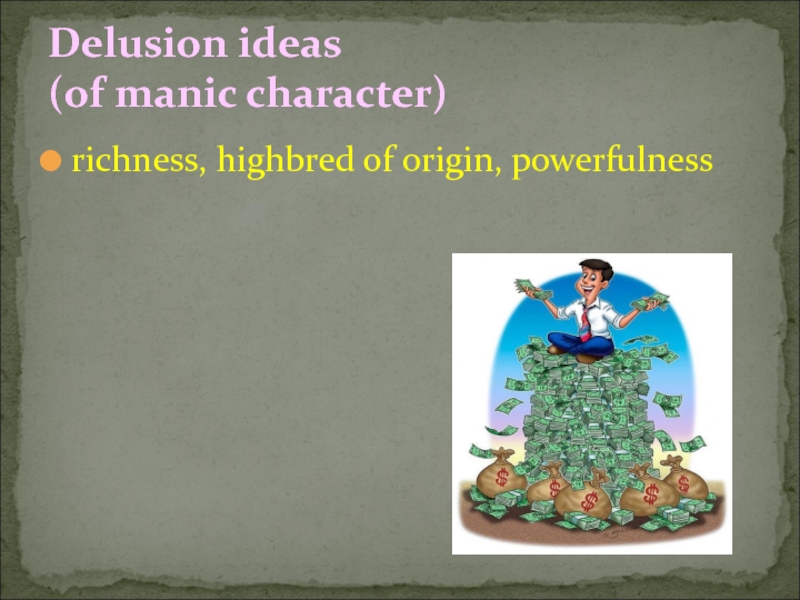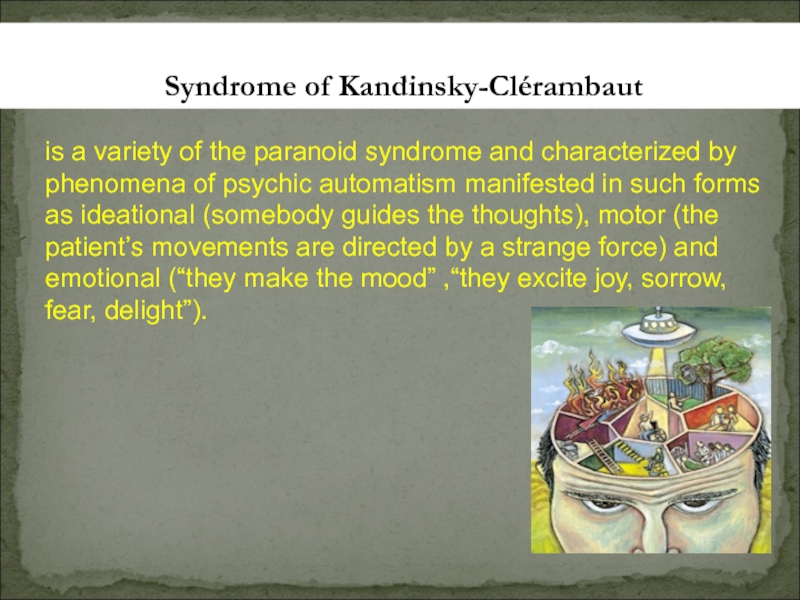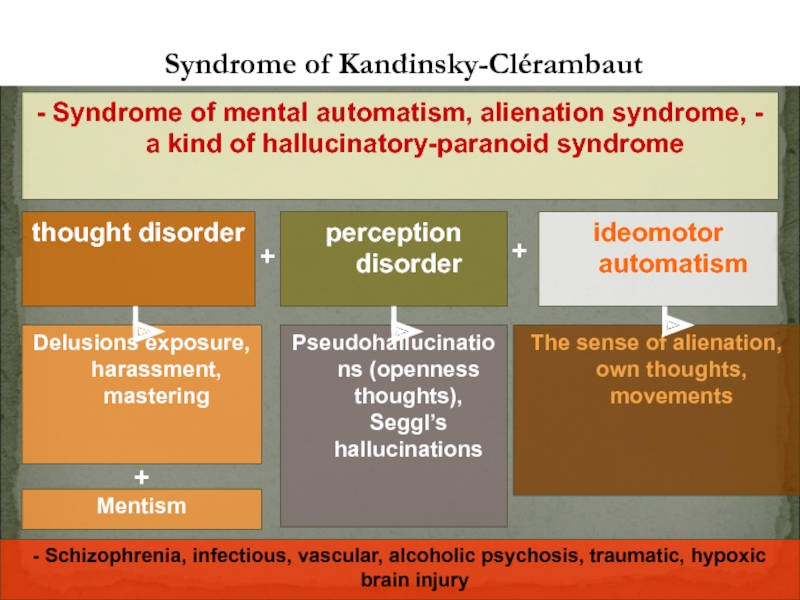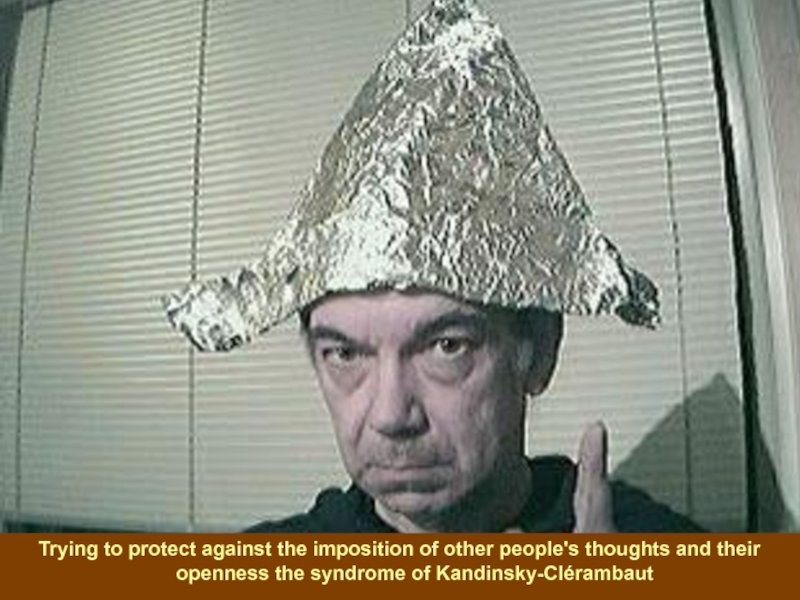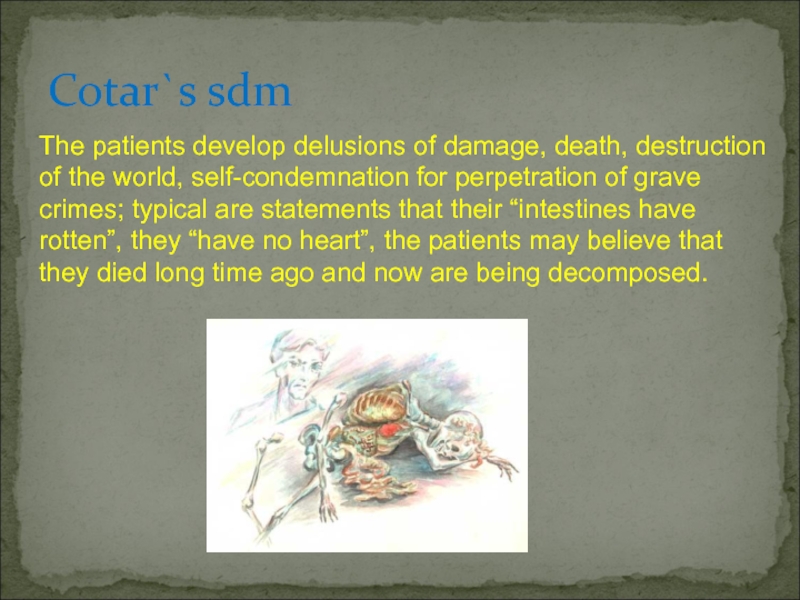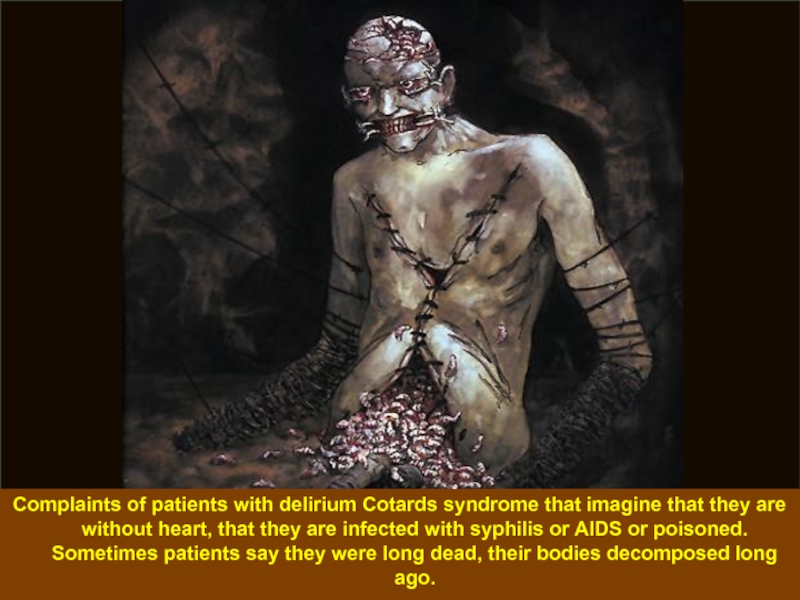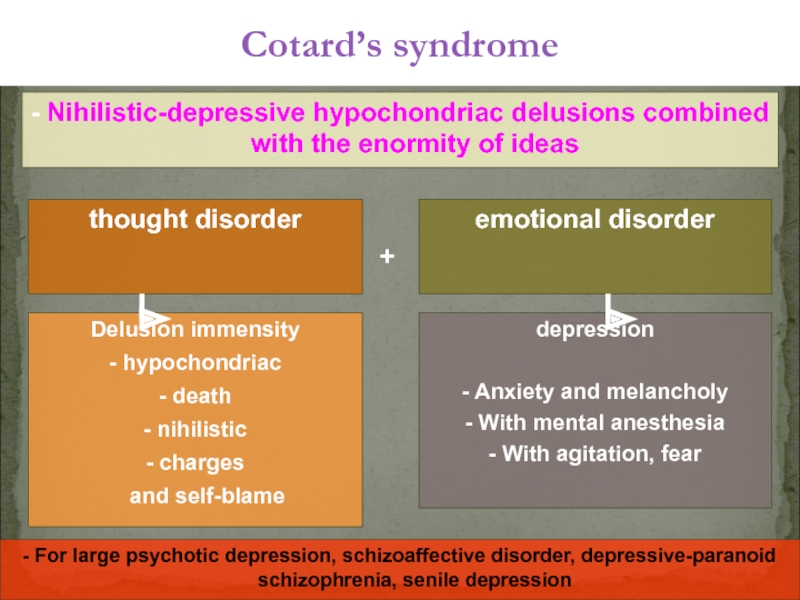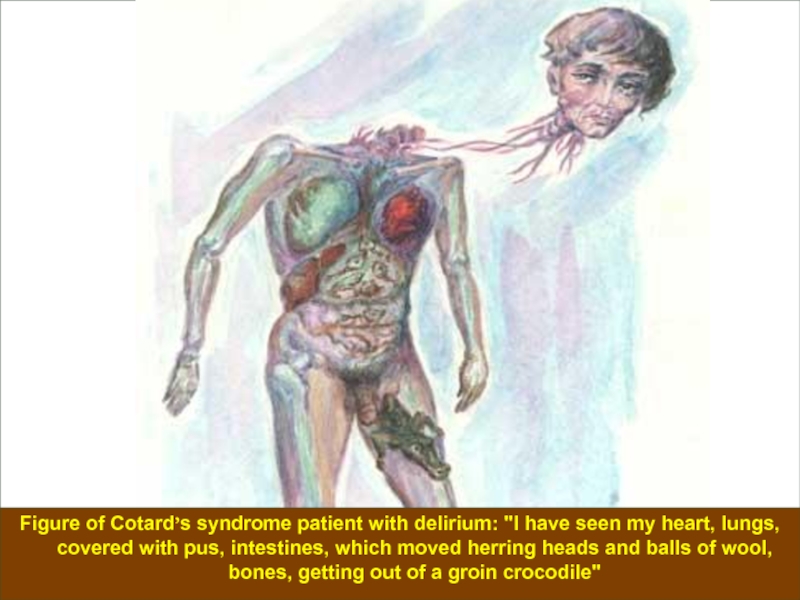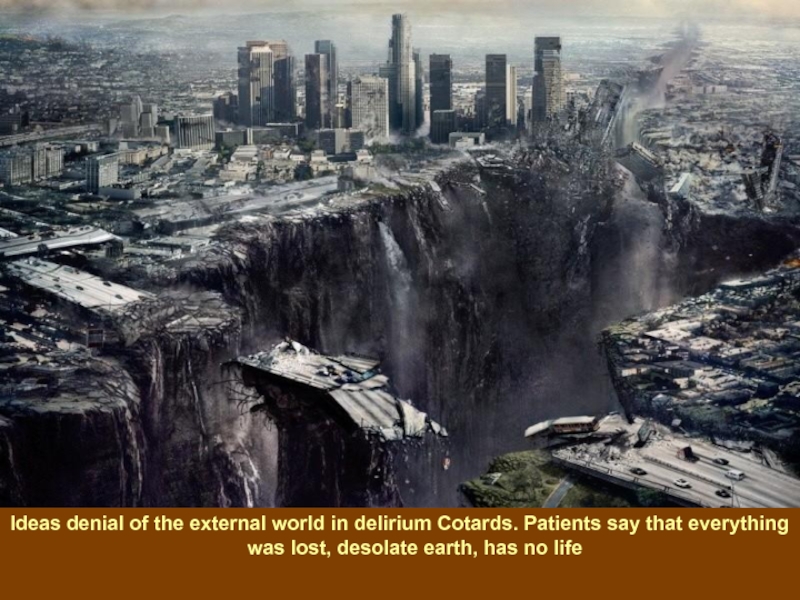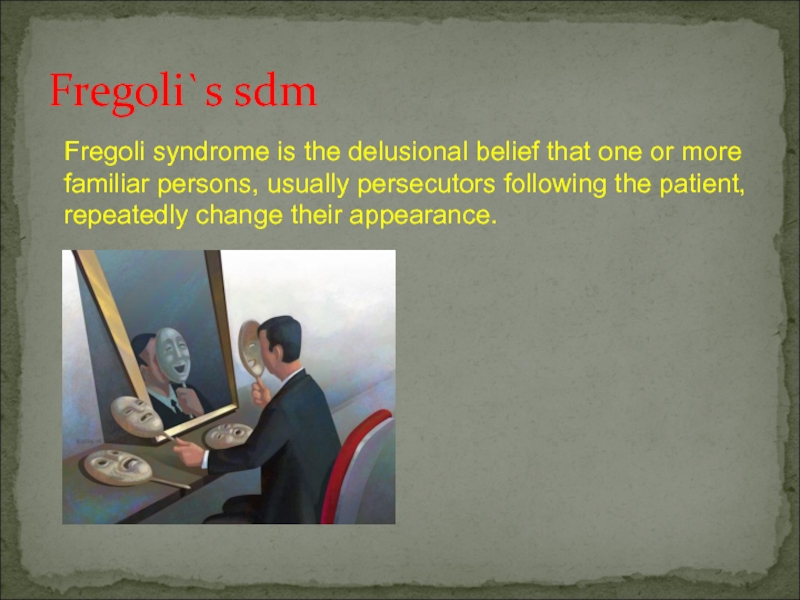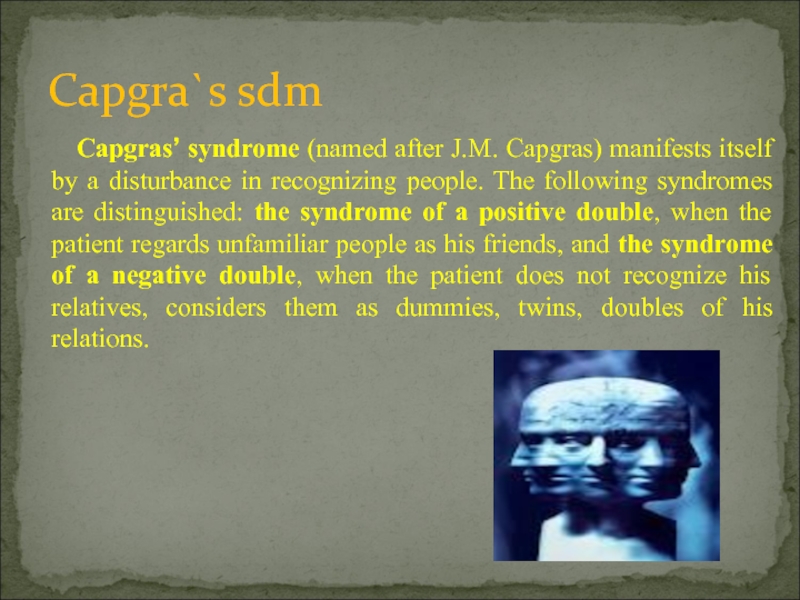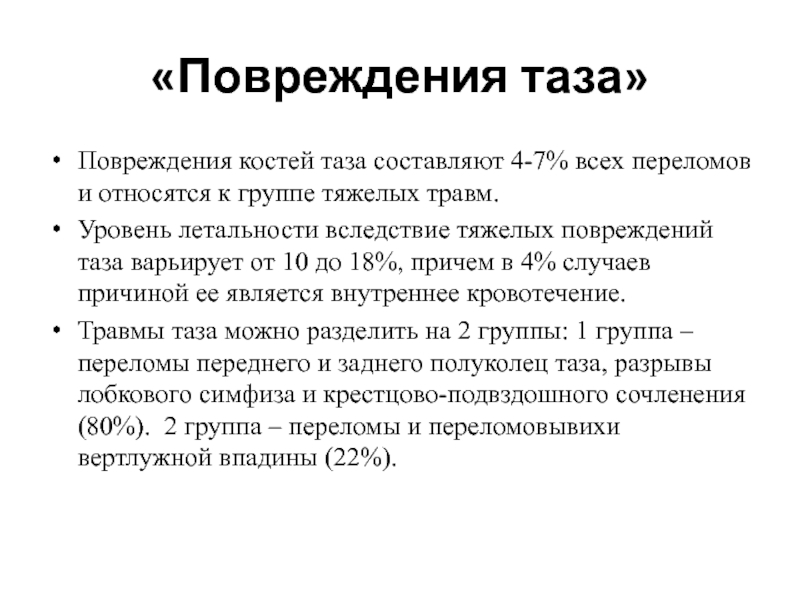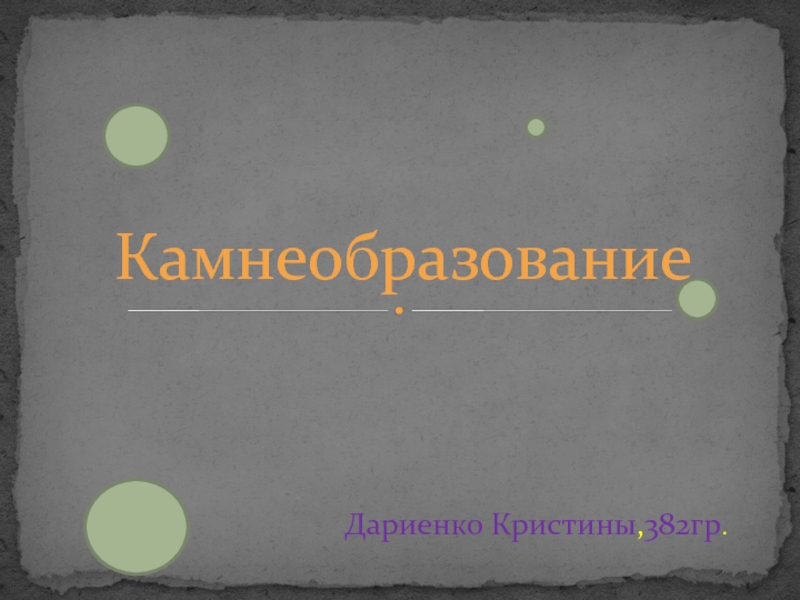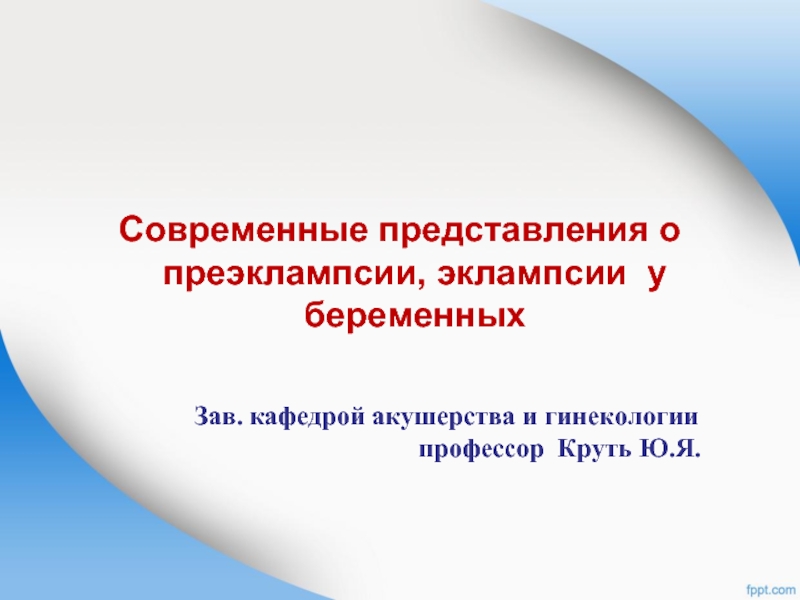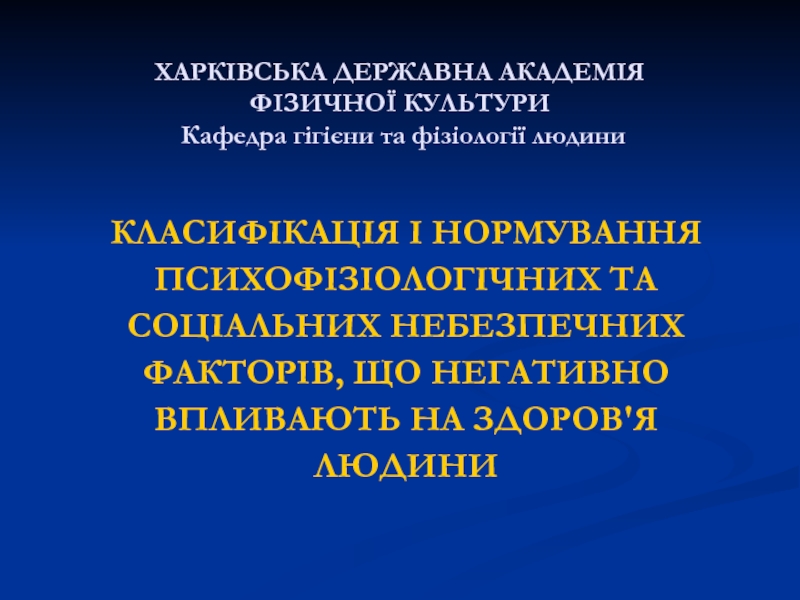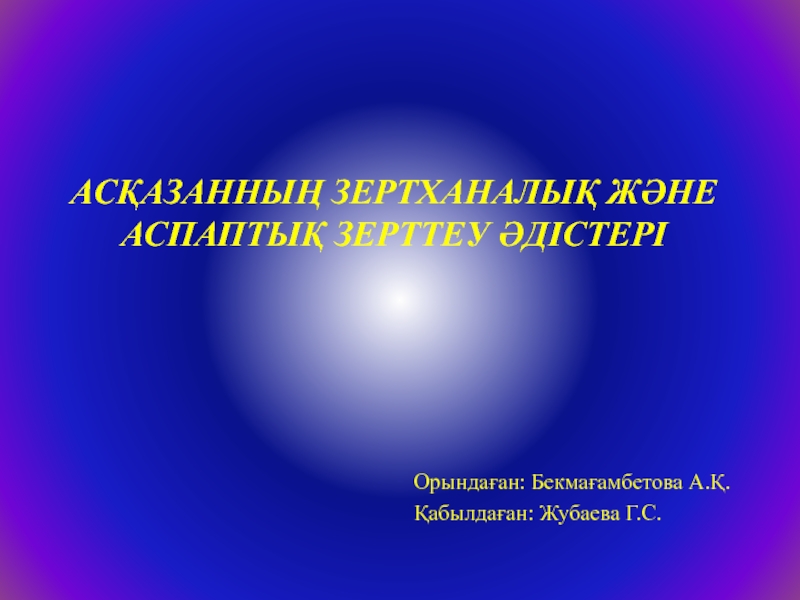- Главная
- Разное
- Дизайн
- Бизнес и предпринимательство
- Аналитика
- Образование
- Развлечения
- Красота и здоровье
- Финансы
- Государство
- Путешествия
- Спорт
- Недвижимость
- Армия
- Графика
- Культурология
- Еда и кулинария
- Лингвистика
- Английский язык
- Астрономия
- Алгебра
- Биология
- География
- Детские презентации
- Информатика
- История
- Литература
- Маркетинг
- Математика
- Медицина
- Менеджмент
- Музыка
- МХК
- Немецкий язык
- ОБЖ
- Обществознание
- Окружающий мир
- Педагогика
- Русский язык
- Технология
- Физика
- Философия
- Химия
- Шаблоны, картинки для презентаций
- Экология
- Экономика
- Юриспруденция
Elements of thinking презентация
Содержание
- 1. Elements of thinking
- 2. is the higher form of reflection of
- 3. ELEMENTS OF THINKING
- 4. analysis synthesis
- 5. DEVELOPMENT OF THINKING IN ONTOGENESIS Visual-thinking -
- 6. 1. A disturbance in the formation of
- 7. 3. A disturbance in the form of
- 8. 4. A disturbance in the contents of
- 9. Pseudoconcept – based on random signs condensation
- 10. PATHOLOGY associative processes PATHOLOGY
- 11. Reasoner Using the technical tools
- 12. Symbolic thinking: the patient supplies various
- 13. Shperrung Delay of thinking (Shperrung)
- 14. Mentism Flow of
- 15. Autistic – utterly introverted thinking.
- 16. Incoherent thinking is characterized by inability
- 17. Perseveration - is the uncontrollable repetition
- 18. Detailed (pathologically circumstantial thinking) speech contains
- 19. Concrete thinking characterized by actual things, events,
- 20. OBSESSIONS DELUSION-like PATHOLOGY OF THINKING (BY CONTENT) PATHOLOGY OF JUDGMENTS DELUSION DOMINANT PHANTASMS
- 21. Obsessive thinking - stereotype repeated ideas, representations,
- 22. phobia Persistent, pathological, unrealistic, intense fear
- 23. - develop at special stenic persons, dominate
- 24. Delusion ideas - false conclusion, arising
- 25. false conclusions arising on the painful basis
- 26. Stages of formation of
- 27. Holothymic Residual Katathymic PATHOLOGY OF
- 28. systematic PATHOLOGY OF THINKING (content) Delusions about structure Non systematic
- 29. Mechanism of formation The paranoiс syndrome -
- 30. Delusion ideas (of depressive character) I of
- 31. richness, highbred of origin, powerfulness Delusion ideas (of manic character)
- 32. poisoning, damage, influence, relations, prejudice, harassment, jealousy Delusion ideas (of persecution character)
- 33. is a variety of the paranoid syndrome
- 34. thought disorder Syndrome of Kandinsky-Clérambaut
- 35. Trying to protect against the imposition of
- 36. Cotar`s sdm The patients develop delusions of
- 37. Complaints of patients with delirium Cotards
- 38. thought disorder Cotard’s syndrome - Nihilistic-depressive hypochondriac
- 39. Figure of Cotard’s syndrome patient with
- 40. Ideas denial of the external world in
- 41. Fregoli`s sdm Fregoli syndrome is the delusional
- 42. Capgra`s sdm Capgras’ syndrome (named after J.M.
Слайд 2is the higher form of reflection of the objective reality, a
THINKING
Слайд 3ELEMENTS OF THINKING
CONCLUSION
reasoning process, during which a transition
from the
JUDGEMENT
form of thinking in which anything is approved
or denied about the subject matter, its properties
or relationships between objects
CONCEPT
displayed in thinking
unity essential properties of connections and relationships
objects or phenomena;
thought or system of thought, which distinguishes
and generalizing a class of objects
by certain generic and collectively
specific grounds for their
Слайд 4 analysis
synthesis
generalization
concentration
abstraction
classification
inclusion
exclusion
conception thinking.
Thinking is determined by operations
Слайд 5DEVELOPMENT OF THINKING IN ONTOGENESIS
Visual-thinking - the most elementary kind of
Visual-creative thinking - the kind of thinking is characterized by reliance on perceptions and images. With visual-figurative thinking in terms of the situation transformed image or representation.
Figurative (verbal-logical) thinking - the kind of thinking, implemented using logic operations with concepts. When verbal and logical thinking, in terms of logical concepts, the subject can learn significant patterns and relationships unobservable reality studied.
Conceptual (abstract-logical) thinking - the kind of thinking, based on the allocation of essential properties and relations abstracted from the object and the other, irrelevant.
Слайд 61. A disturbance in the formation of concepts:
a) pseudoconcepts,
c) neologisms.
Classification of disturbances of thinking
2. A disturbance in the rate of thinking:
a) rapidity of thought, “galloping ideas”,
b) retarded thinking,
c) delay, arrest (Sperrung),
d) mentism.
Слайд 73. A disturbance in the form of thinking:
a) pathologically
b) philosophizing,
c) non-continuous thinking – schizophasia,
d) incoherent thinking,
e) amorphous thinking,
f) paralogic thinking,
g) autistic thinking,
h) symbolic thinking,
i) verbigerations,
j) perseverations,
k) affective thinking.
Слайд 84. A disturbance in the contents of thinking:
a) Obsessive
b) dominant ideas,
c) supervaluable ideas
e) delusion-like fantasies,
f) delusions.
Слайд 9Pseudoconcept
– based on random signs
condensation of concepts – "Gluing" two concepts
Disorder of semantic content and concept formation
Neologisms - new and unusual concepts
- In schizophrenia
Слайд 10
PATHOLOGY associative processes
PATHOLOGY OF THINKING (FORM)
Tachiphrenia
– accelerated
amount
associations
per unit time
Bradifrenia,
torpid
- Slow -
reduction
associations amount
per unit time
Mentism
- Rush of ideas -
"Whirlwind of ideas"
acceleration
thinking
arising
paroxysmal
shperung
- "Blockage of thoughts" -
sudden stop associative process
As the pace of …
"Jump ideas"
- maximum
acceleration
thinking
depression,
organic CNS disorder
Mania
Schizophrenia
Слайд 11Reasoner
Using the technical tools of logic in an unhelpful
Слайд 12
Symbolic thinking: the patient supplies various concepts with some allegorical meaning
Слайд 13Shperrung
Delay of thinking (Shperrung) manifests itself by a sudden
Слайд 14
Mentism
Flow of thoughts (mentism) is an automatic flow
Слайд 15Autistic – utterly introverted thinking.
Autistic thinking based upon the
Слайд 16
Incoherent thinking is characterized by inability to form associations; separate perceptions,
Слайд 17
Perseveration - is the uncontrollable repetition of a particular response, such
Слайд 18
Detailed (pathologically circumstantial thinking) speech contains big amount of useless smallest
Verbigeration is a senseless repetition of the same words or scraps of phrases. It is typical for schizophrenia.
Слайд 19Concrete thinking characterized by actual things, events, and immediate experience, rather
Слайд 20OBSESSIONS
DELUSION-like
PATHOLOGY OF THINKING (BY CONTENT)
PATHOLOGY OF JUDGMENTS
DELUSION
DOMINANT
PHANTASMS
Слайд 21Obsessive thinking - stereotype repeated ideas, representations, memories, rituals, which arise
Stereotypically repeated ideas, representations, memories, rituals etc.
Arises involuntary
Cannot be stopped
Patients have critics to state
Obsessive ideas
Слайд 22
phobia Persistent, pathological, unrealistic, intense fear of an object or situation;
Obsessive phobias
Слайд 23- develop at special stenic persons, dominate in the mental life,
Developing among the specific stenic persons
Developing on a base of a real facts
Dominate in the mental life, superseding all other motives
Critics is absent
May be partial and a short-term correction
Super valuable thinking (ideas)
Слайд 24
Delusion ideas - false conclusion, arising on the painful basis (change
Слайд 25false conclusions
arising on the painful basis
(changes of mood, perception or
any ability for correction
critics is absent
Delusion ideas
Слайд 26
Stages of formation of delusion ideas
(acc. to K.
Delusional mood
Delusional perception
Delusional interpretation
Delusion crystallization.
Delusion ideas
Слайд 27Holothymic
Residual
Katathymic
PATHOLOGY OF THINKING (content)
Types of delusions
Katesthetic
Primary \ Secondary
Induced
Слайд 29 Mechanism of formation
The paranoiс syndrome - Systematized (primary) interpretation, constructing of
The paranoid syndrome - anSystematized (secondary) - influence of changed mood or perception, memory.
Induced – recipient, healthy person, reproduced a Delusion ideas of inductor, ill person.
Delusion ideas
Слайд 30Delusion ideas
(of depressive character)
I of guilt and self accusation, hypochondria (incurable
Слайд 32poisoning, damage, influence, relations, prejudice, harassment, jealousy
Delusion ideas
(of persecution character)
Слайд 33is a variety of the paranoid syndrome and characterized by phenomena
Syndrome of Kandinsky-Clérambaut
Слайд 34thought disorder
Syndrome of Kandinsky-Clérambaut
- Syndrome of mental automatism, alienation syndrome,
Pseudohallucinations (openness thoughts), Seggl’s hallucinations
perception disorder
Delusions exposure, harassment, mastering
ideomotor automatism
+
+
Mentism
+
The sense of alienation, own thoughts, movements
- Schizophrenia, infectious, vascular, alcoholic psychosis, traumatic, hypoxic brain injury
Слайд 35Trying to protect against the imposition of other people's thoughts and
Слайд 36Cotar`s sdm
The patients develop delusions of damage, death, destruction of the
Слайд 37
Complaints of patients with delirium Cotards syndrome that imagine that they
Слайд 38thought disorder
Cotard’s syndrome
- Nihilistic-depressive hypochondriac delusions combined with the enormity of
depression
- Anxiety and melancholy
- With mental anesthesia
- With agitation, fear
emotional disorder
Delusion immensity
- hypochondriac
- death
- nihilistic
- charges
and self-blame
+
- For large psychotic depression, schizoaffective disorder, depressive-paranoid schizophrenia, senile depression

